Safari: The Emotional Side
Let’s face it, when the time comes to set out for a safari, most of us have a pretty simple checklist. We want to see amazing animals in wonderful natural settings. Among the most desired animals are predators – big cats, crocodiles, hyena, eagles and whatever other top animals are around. But, we don’t just want to see these animals lounging around napping lazily under a tree. No, we want to see them active, animated, and hunting. The capstone moment of most safaris, the holy grail if you will, is the kill. That moment when a leopard bursts from inaction or casual stalking into the embodiment of natural selection – a sleek, powerful, awe-inspiring killing machine.
As it happens, you find yourself breathless with excitement. Sliding to the edge of your seat, looking on, body locked into place. It is the type of heightened attention and expectation every movie director dreams of. It is addictive – long in the making and ever so brief in the realization. Then, usually in near silence it ends. The predator catches its prey, locks its jaws onto it, and begins to bleed away its life force.
It’s at that point that reality hits you. The realization that you’ve just participated in an ancient tradition: the theater of death. The Romans had their colosseums, the Mayans human sacrifice and we…well…we have war footage and reporting, with the occasional hanging or lethal injection thrown into the mix. For me it brings to mind the mental image of a crowd assembled, gathered in front of a raised platform crowned by a red-stained wooden block. The gathered throng of humanity chanting in glee, excitement building, riding that balance between disruption and expression. Then, the fall of the axe, the end of a life, and the euphoric sense of life retained that washes through the crowd followed by awkward silence.
As a species we are fascinated by our own mortality and all of the ways it can be explored. As we advance, the majority of us become further and further removed from death. We live longer and lose our friends and family far less often. Our food comes to us carefully cut, prepared, and pre-packaged. We are the world’s most successful predators and death dealers but, we are also simultaneously often the most removed from death and the act of life-taking. These traits combine with our somewhat unique ability to feel empathy for all living creatures into a strange cocktail of life and death.
It’s one thing to watch a clean kill, the type of kill when a predator goes head to head with a healthy adult and wins. Either because of superior strategy or surprise and power. But, when that kill ends up being a newborn, it is far more difficult to watch. The indiscriminate brutality of nature violates the way we emotionally connect with other species – from the polar bear or lion that kills and eats their cub to the crocodile that feasts on a baby water buffalo while its mother watches helplessly from nearby. These are the moments that often reduce safari-goers to tears. A mixture of the cold, harsh nature of natural selection combined with the beautiful reality of the way the world works.
But even more difficult are the complicated kills. The kills which include a mother baboon and her still dependent baby or slow kills made possible through disease or injury. It is in these moments that you find yourself most torn. The moments where every fiber of your body demands you act and involve yourself but, intellectually you know you are supposed to remain the neutral observer. I recall watching footage of a baboon kill made by a leopard. As they’re prone to do, the leopard dragged the corpse up into a tree but was then surprised to discover a baby baboon still clinging to its mother’s corpse. The baby was just weeks old, still un-weaned. The footage continued with the leopard trying to adopt the baby baboon. Cleaning it, keeping it close, and gently caring for it. What happened a few hours later I cannot say. But it was brutally hard to watch. I can only imagine the heartache it must have caused for the people on site watching it unwind in real time.
My baby baboon moment came in South Luangwa when we came upon an injured hippo. Large and powerful, it’s back bore the scars of countless fights. When healthy, I doubt there was another creature besides other hippos and the rare elephant within 100 miles that could have challenged or threatened it. Yet it had broken its hind legs somehow. Stranded and able to stand on its front legs in a sitting position, but unable to do more, it was just a matter of time before nature ran its course and the predators felt safe enough to approach. It faced an ugly death – the piercing bite of a predator or the slow pains of starvation, sun stroke and dehydration.
By that evening, the first predator had found his courage. It was a leopard who carefully stalked and explored the hippo’s range of motion and ability to defend itself before eventually starting to feed at one of the two soft points on a hippo. Given the hippo’s thick hide the only place most predators can get through the tough skin is right underneath the hippo’s neck, and/or beneath the hippo’s tail. Our leopard had begun to tear into the soft flesh beneath the hippo’s tail. Satiated, he strolled a few feet away and settled down to clean himself just as we arrived. He watched as two hyena approached the scene. The hyena picked up where the leopard had left off digging deeper and deeper into the hippo as blood covered their faces and pulsed onto the ground. Through it all the hippo could only lay there, periodically pulling itself up on its front legs, a silent witness to its imminent death. Video chronicling the entire process from start to finish is available here.
We couldn’t interfere. Oh how we wanted to! Our guide had a gun, the hippo was obviously not going to survive. Even had it regained the ability to move its legs, the gaping hole where its anus had once been left no doubt that death was quickly approaching. Would it really make a difference to shoot it and to end its suffering? The reality is that it would. Our role was to remain neutral observers and not to interfere in the natural cycle; to look on and experience nature’s will. We did – fighting the inner battle to look away but drawn to the wildness of the spectacle unfolding before us. When we couldn’t take it anymore we headed back to the comfort of our camp; to the casual half-truth of hippos sleeping happily on river banks and lazy leopards napping in grass fields. To see the darker side of nature was hard but after all, this was part of the reason we had come – to see nature, all of nature, at work. To follow the process, the circle of life, and to face the harsh realities of the African bush.
There was a certain beauty to it all. Not in the hippo’s suffering which lasted for hours as more and more hyena showed up and continued their feast. But, rather in the sum of the experience. What had started with an afternoon spotting of an injured hippo, turned into a two and a half day process as we watched the hippo’s corpse feed hundreds of animals. What had started with the leopard and hyena, quickly was followed up by a small army of hyena, small scavengers, and then at least a hundred vultures. Where I expected rot and waste, we watched as the corpse was picked clean in just over a day until all that was left was the white skull and massive spinal column that had once given the hippo life. There was beauty to the full cycle, to the interaction between creatures, to the efficiency of the natural food chain.
While I still feel shreds of guilt over not being able to do anything to end the hippo’s suffering, understanding the role it played in the greater circle of life makes a huge difference.
Embracing death is part of the safari experience. It can be shocking and deeply unsettling. It provides an insight into nature and into our own hearts and minds. It explores who we are, where we come from, and is a cold reminder that life is built upon other life.
A special thank you to our guides at Shenton Safaris who kept us safe and walked us through the process.
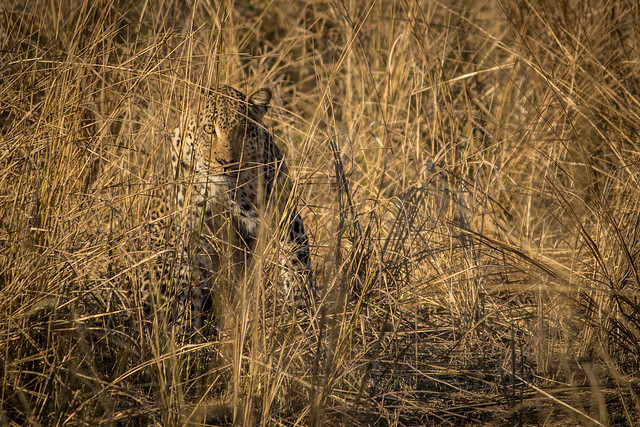
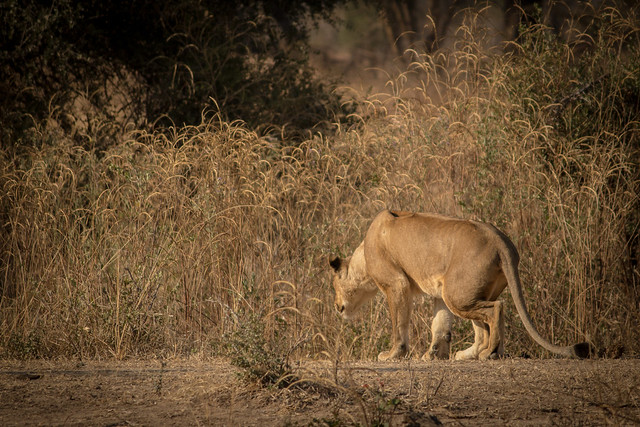
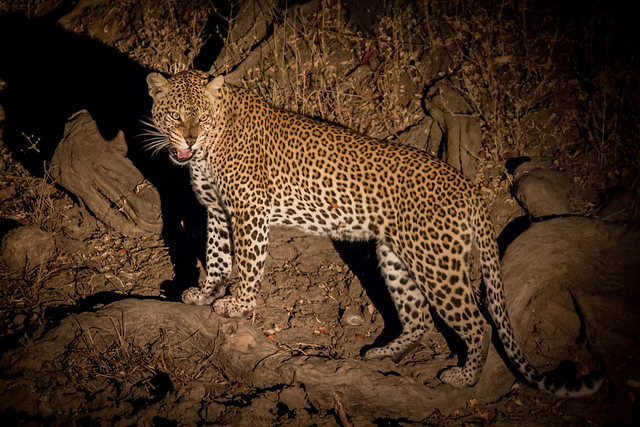

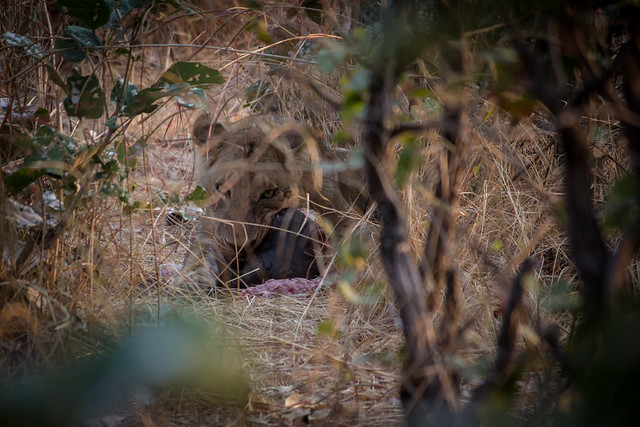
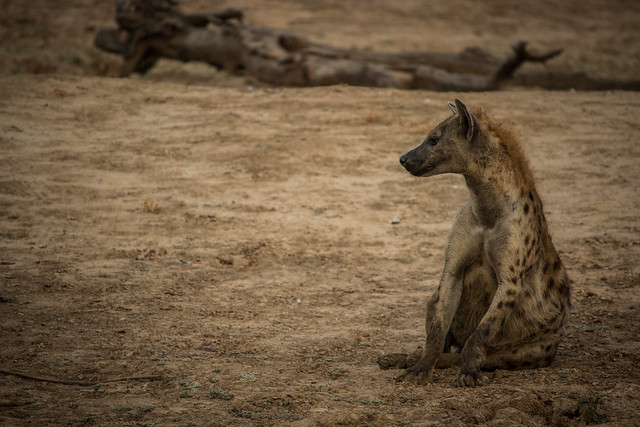
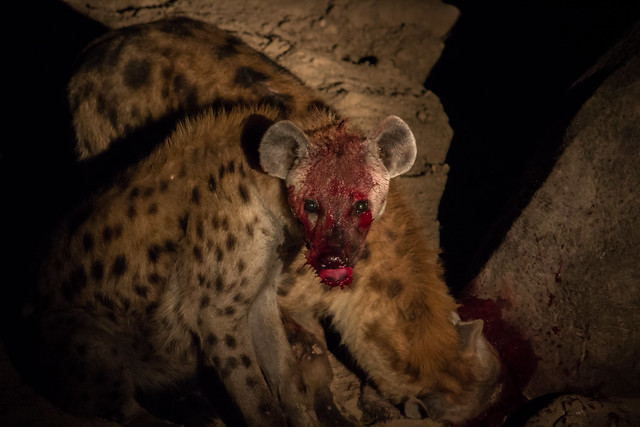
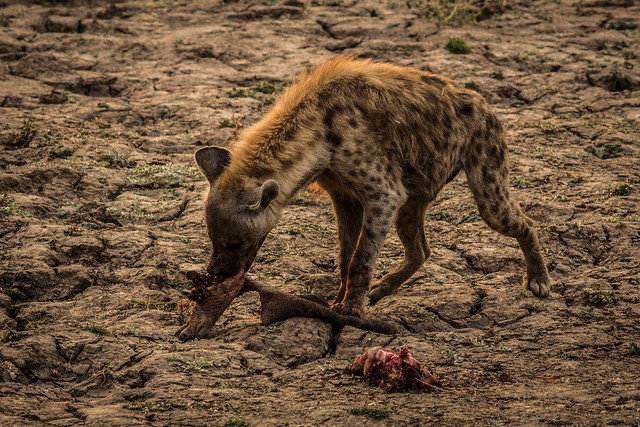
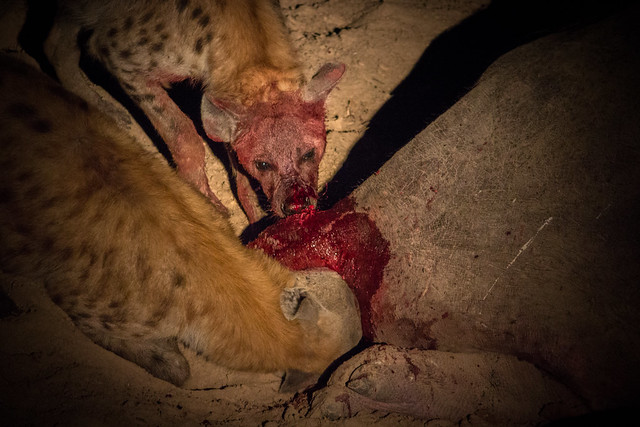
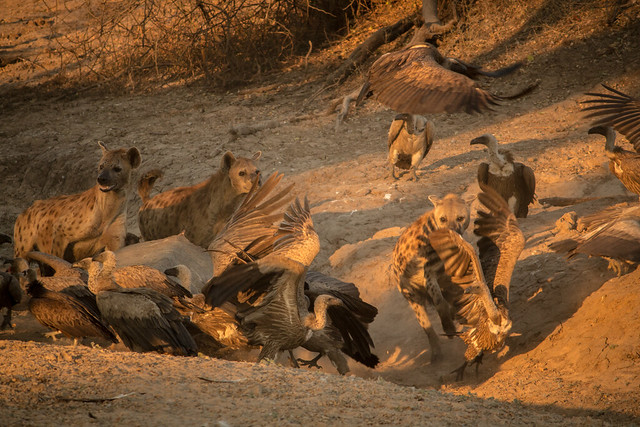

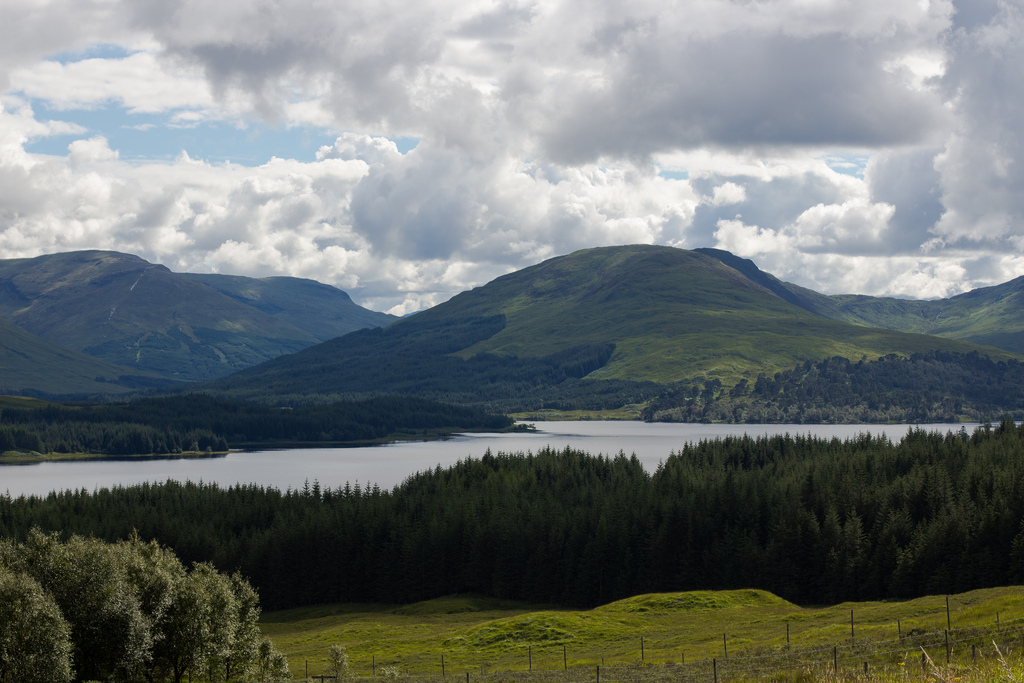
I really enjoyed this one, Alex! Great photos…you’re really coming into your own as a photographer. Love it!
Thank you Michael! Really means a lot!
That sounds like it would be so hard to watch! A safari is my dream trip, but I have to admit I hadn’t really thought about the fact that I might see animals suffering like this. On a happier note, your photos are incredible!
Thank you Emily! Don’t let it discourage you. It is definitely hard to watch but it is part of it. Just prepare yourself a bit for it mentally!
Well written my friend!
Thank you!
I have to admit…. I really, really want to see a kill. Was one of the things I didn’t get to see last time down there (obviously very rare, so doubt I ever get to see one), but it would be great to see the full circle of life in action.
It really is an amazing experience. We were incredibly lucky in that we saw the hippo kill, as well as came across a Leopard who had just made an impala kill, though she dragged it into the privacy of the bushes, so it wasn’t until the next morning when we came upon it up in the tree above us (as she lounged in the grass off to the side) that we actually “Saw” it. We had amazing luck and more or less the entire area to ourselves. It was a brilliant trip!
Here’s the video of the hippo kill that I just finished and uploaded: http://www.youtube.com/watch?v=g4hbsLrAwq4&list=UUUtu7t-eglMzDFNjRMv1PMw&index=1
Really enjoyed this post, Alex. I would’ve been a bawling mess so I’m actually pretty glad I didn’t see a kill during my Masai Mara safari. You really tell a compelling tale!
Thanks Angie! Yeah, it can definitely be rough!
I’m also sorry for the poor hippo, but that’s the life of being a prey.
l love these post dear , you remind me of my young days when l was growing up in mfuwe-south luangwa national park.
l am fearless though.
Very well-written post, Alex! It sounds like watching a kill is a very complex, emotional experience.
Thanks!